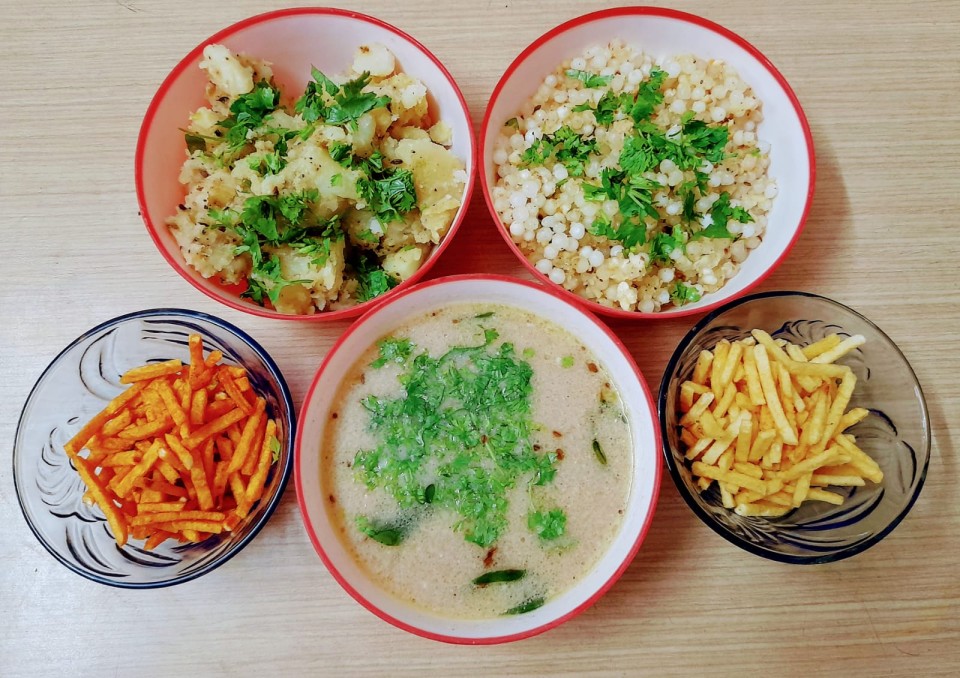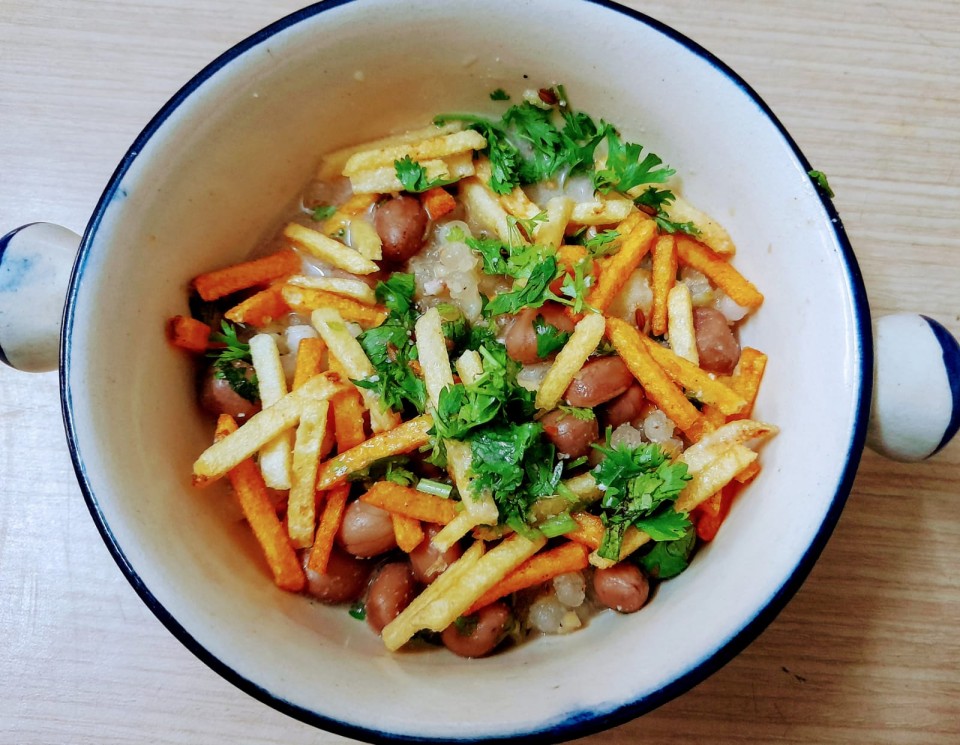The generalisation that every Gujarati looks forward to Navratri, a nine-day-long festival involving dandiya and garba, may not be true but the delicious fasting food that tags along is definitely a favourite in the community.
The nation celebrates Navratri twice a year during which families across North India observe fasting. As the festival of Shardiya Navratri began on October 7, we bring you the importance of consuming sabudana or Sago, a staple across the country.
Being a Gujarati, I can vouch for the sabudana-based delectables like dosa, khichdi and vadas that my family consumes every year.
Sabudana — tiny, white, spherical balls, are made from the milk of tapioca root, which are finely ground to remove the liquid starch. The water content eventually evaporates making the product a fine powder. Then it goes in a processing method which includes sieving under high pressure that gives the final product its white pearl-like structures, also called ‘tapioca pearls’.
They are very high in starch content and act as energy boosting food needed, especially during fasting. It works as a wholesome food, providing essential nutrients such as calcium, proteins and fibers. Sabudana porridge is also given to infants for physical development and muscle building.
“Sabudana has many benefits to offer, especially when combined with fibre-rich foods. So having sabudana along with vegetables or fruits that are rich in fibre is an excellent combination and can be easily incorporated in your diet,” Dr Namita Nadar, head nutritionist, Fortis Hospital, Noida told Healthshots.
Here are Some Health Benefits:
With 11 mg of potassium (per 100 grams), sabudana can help keep blood pressure under control. Potassium helps in losing sodium through urine, which eases tension in blood vessel walls.
Sabudana contains ‘resistant starch’ that reduces stomach-related problems like constipation, gas and bloating.
The food also helps in improving one’s bone density, as it is rich in calcium, iron and magnesium. The calcium also tackles issues like blood clotting and tension between nerves.
Meanwhile, the proteins help in repairing damaged cells and tissues and promote muscle growth.
A carbohydrate-rich food, sabudana is the best way to start an energetic morning. The starchy product contains carbohydrates and calories that provide energy.
How to Consume Sabudana?
Sabudana is a versatile ingredient that can be boiled, fermented, fried or roasted into a savory or sweet dish. Since it lacks nutrients like minerals and vitamins, it is best consumed with other ingredients like vegetables or fruits.
Chhaya Karelia shares the recipe for Sabudana Misal that has been passed down from her ancestors. While it can be a little complicated for beginners, the ingredients from this dish can be easily found in one’s kitchen.

Preparation+Cooking time: 45 minutes
Ingredients
- Sabudana: 1 bowl (250 grams)
- 3 medium sized boiled potatoes cut in cube size
- Whole peanut: 250 grams
- Peanut powder: 250 grams
- Cumin seeds: 1 spoon
- Curry leaves
- Chilli-ginger paste: according to taste
- Ghee
- Salted Wafers (Katri)
- Coriander
- Salt: To taste
- Black pepper powder
- Sendha salt: 2-3 pinch
Process:
It is a three-step process that begins with soaking sabudana for 3 hours and then leaving it to dry.
Step 1: For adhesive/gravy like texture:
Add whole peanut, salt and water (2.5 glass) in pressure cooker for 10 whistles.
Step 2: For Sukhi Bhaji:
- Heat a frying pan or wok and add 2-3 teaspoons of ghee.
- Add cumin and curry leaves.
- Add the chilli ginger paste and diced potatoes.
- Add sendha salt, black pepper, regular salt, coriander and mix it for 6-7 minutes.
Step 3: For cooking the sabudana:
- Heat a frying pan or wok and add 2-3 tablespoon ghee.
- Add cumin and curry leaves.
- Add the chilli-ginger paste.
- Add the dried sabudana.
- Add peanut powder for coating.
- Add salt to taste.
- Keep stirring the utensil for 10 minutes and keep it aside.
In the final step, remove the ingredients from the cooker and transfer it onto the pan. Add the chilli-ginger paste, peanut powder, cumin and curry leaves to make the gravy thick. Finally, add 2-3 tablespoons of buttermilk and let it simmer for 2-5 minutes.
For Serving:

Take the ‘sukhi bhaji’ on a plate, add sabudana on top and cover the mixture with the gravy. Sprinkle the wafers on the side and garnish the dish with coriander.
Nutritious value of 100 grams of Sabudana
- Energy- 358 Kcal
- Carbohydrates- 88.7 g
- Water- 11 g
- Proteins- 0.19 g
- Fats- 0.02 g
- Iron- 1.58 g
- Calcium- 20 g
- Potassium- 11 g
- Phosphorus- 7 g
- Sodium- 1 g
Source: USDA
Edited by Yoshita Rao
No comments:
Post a Comment